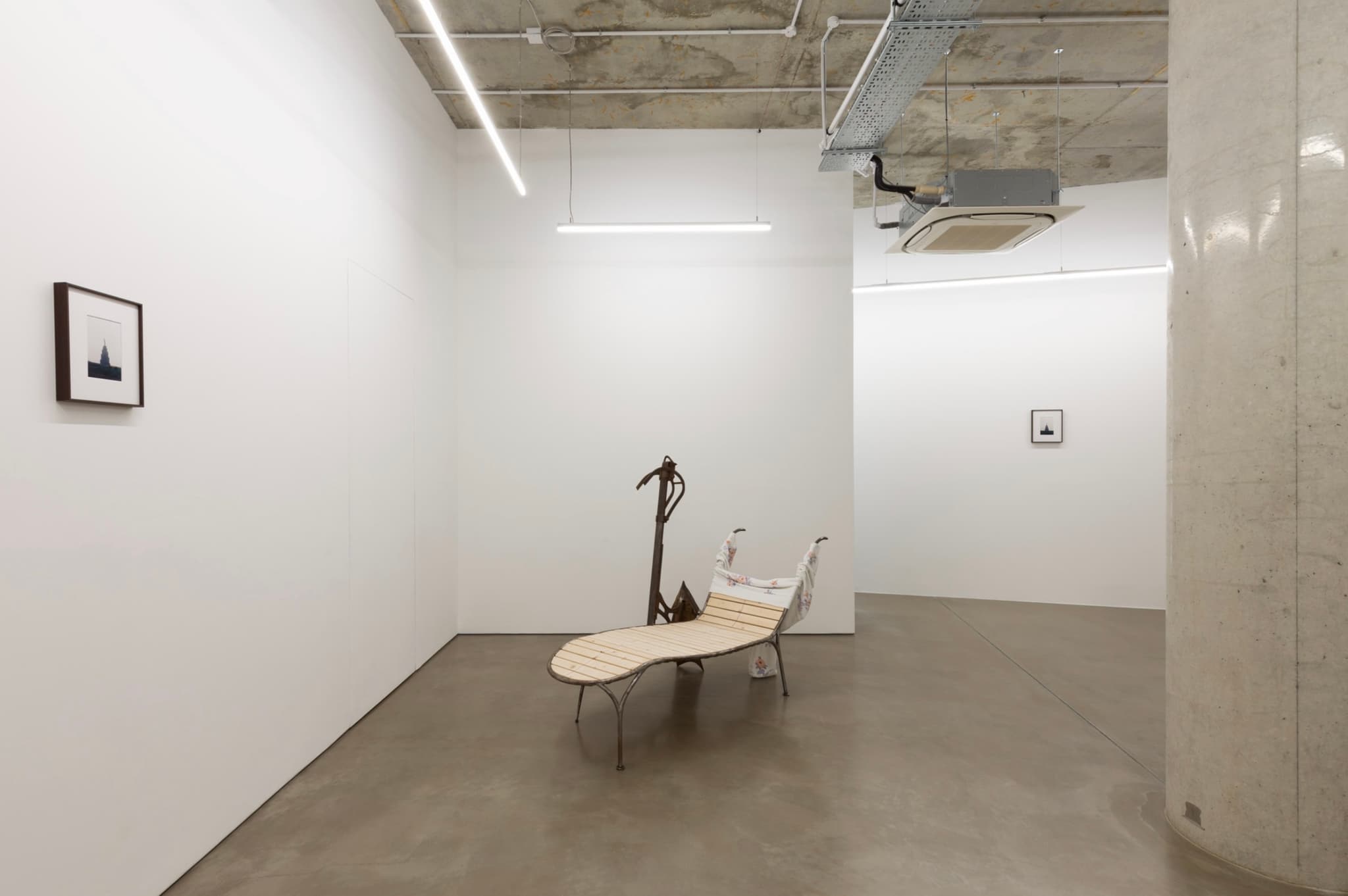Dozie Kanu Invokes the Spectres of Disused Objects
November 2020

At Project Native Informant, London, the artist asks how one person’s labour is exploited to facilitate another person’s leisure.
'How might we understand mourning, when the event has yet to end?' This question, raised by Saidiya Hartman in her essay 'The Time of Slavery' (2002), serves as an introduction to Dozie Kanu's solo exhibition, 'Owe Deed, One Deep', at Project Native Informant. Kanu, whose practice sits at the intersection between fine art and design, presents five new sculptures. Unlike previous works, such as Chair (ili ](Crack Rock Beige) (2018), which combined aesthetics with functionality, here Kanu is preoccupied with the underlying story of the objects as opposed to their function.
Kanu's sculptures can be described as objects of curiosity whose meanings are not immediately readable. Take Healthy Minds Must Grow, Watch from the Bleachers (all works 2020), which appears as the simple frame of a daybed. On closer look, the base has been modelled from a rusted iron swing plough, of the kind made in factories in early-18th century Britain. The curved yellow-pine slats recall the structure of the Clotilda, the last-known ship to transport enslaved Africans, whose unpaid labours generated Britain's fast-industrializing economy and the wealth of other Western nations. Draped over the arms of the frame is a white hoodie embroidered with purple and orange hibiscus blooms. A nod to Kanu's ancestry, the hibiscus plant holds specific sociopolitical meaning in Nigeria, which is among the world's top producers and suppliers of the crop. While an increase in international demand for hibiscus in recent years has had a significant impact on the country's rural communities, the 2017 ban on Nigerian exports to Mexico led to an estimated loss in revenue of US$113 million (#40.6b). Healthy Minds Must Grow, Watch from the Bleachers entices us to recline and relax while simultaneously compelling us to confront questions concerning how one person's labour is exploited to facilitate another person's leisure.
In 'Owe Deed, One Deep', Kanu asks viewers to search for the multiple meanings layered into his works. While some of these themes are drawn out in the exhibition's accompanying text, much is left unsaid. As such, Kanu invokes Caribbean philosopher Édouard Glissant's theory of opacity from his essay 'Poetics of Relation' (1990), in which he sustained that systems of oppression could be subverted by the refusal of the dispossessed to exist transparently. This concept is reflected in works such as merill-y, featuring the buffed golden head of the Egyptian God Amun, whose name (which translates as 'hidden one') indicates this element of obscurity.
Each of Kanu's sculptures remixes and modifies found objects. The visible rust on many of them is a reminder of how readily items are discarded once they are deemed no longer productive. What, then, of the hands that built and employed these abandoned objects? To stand in a room with these works is to be among the spectres of the objects, as well as those who used them and lent them form Kanu gives the discarded a home, repurposing objects deemed useless and, in so doing, honoring and reanimating the people whose labour gave them function. In extending the lives of these unwanted items, he elongates the existence of those who brought them into being. His memorialization is a site of collective mourning of that which has not yet ceased to exist, acknowledging that the pathways and legacies of the oppressive systems of the past continue to characterize the present.
- Jamila Prowse